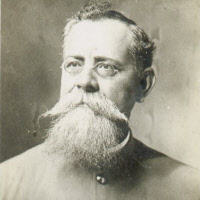Art Custom Framing Gallery Los Cabo San Lucas, San Jose del Cabo, Mexico

 |
|
Carranza
|
Even as Venustiano Carranza was toasting the assassination of the "gangster", Emiliano Zapata, and while fighting continued in the state of Morelos, a new Mexican state was being shaped by the Constituent Assembly that met in Querétaro in November 1916. The drafting of a Constitution was proving to be difficult. Unlike earlier conventions, the Assembly was not dominated by intellectuals or combatants. It was dominated by members of a rising urban mestizo class - professionals, teachers and bureaucrats whose social mobility had been impeded during the Porfirio Díaz regime. They were not revolutionaries per se, but they had strong dislikes, not least of which were the Church, foreigners, large landowners, industrialists and dictators of the breed of Díaz and Huerta. The assembled envisioned a nation ruled by true Mexicans - that is to say, Indians and mestizos - rather than descendants of the conquistadors and other white foreigners. Through their influence and insistence, Carranza was compelled to accept a liberal Labor Code as well as the basic tenets of Zapata's Plan of Ayala, including revival of the ejido land system.
Even more controversial was the federal structure to be adopted. The ideal appeared to be autonomy for individual states and separation of the powers of the executive, legislative and judiciary branches of government along the lines operating in the
With the Constitution in place, however, little improved. Open pressure and meddling by the
Most critically, Carranza himself provided no leadership. A man of few words, his thoughts well hidden behind tiny round glasses and a long white beard, he was a patriarch at a time when a politician was needed.
Meanwhile Obregón was biding his time in
The 1917 Constitution had nationalized churches, established that only Mexican nationals could be priests, banned religious processions and forbade clergy from appearing in public in cassocks, from voting or discussing politics, from owning property and from involvement in education. The 1917 Constitution also provided for a labor code, prohibited a president from succeeding himself, expropriated all property of religious orders, and restored communal lands to the Indians. Many provisions dealing with labor and social welfare were exceedingly advanced and, for their day, radical. Some of the most drastic were intended to curb foreign ownership of mineral properties and land.
The new Constitution was inspired on the one written in 1857; however, this one touched on matters that had never been subject to legislation before. Among its most important principles were articles 27 and 123: the first established that all territorial lands and waters, as well as the air space above them, were the sole property of the nation, which could give concessions in the interest of the country, but could also take them away, emphasizing the national character of the subsoil; the second one, article 123, established guaranties for the workers of the country by regulating hours, salaries, distribution of profits, and the rights of association and strike. The document remains valid in México to this day.
During the past two decades, México has taken giant strides toward the 21st Century and appears on the verge of becoming a full fledged economic partner with the
* The famous Zimmermann telegram that accelerated the
References: Distant Neighbors, 186 1984 Alan Riding
MEXICO Profile of a Nation, Enstituto Nacional de Estadística, Geografía e Infornática (INEGI) 1989
Funk & Wagnalls New Encyclopedia 1971